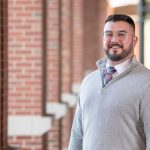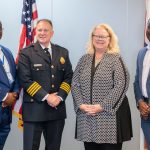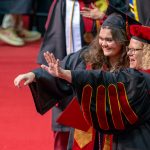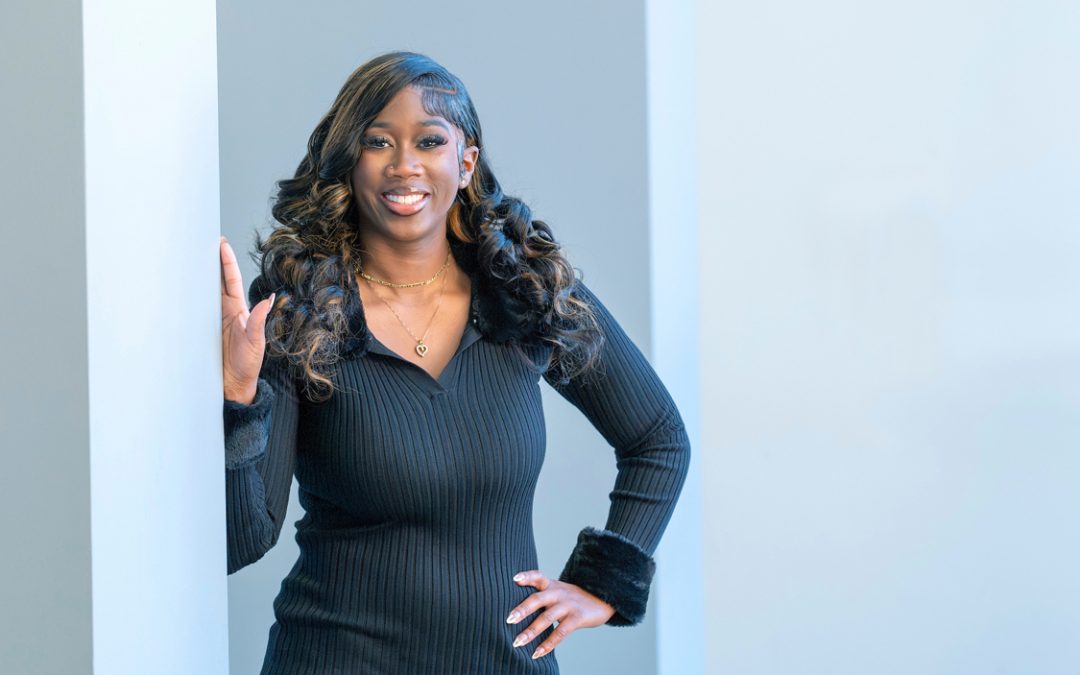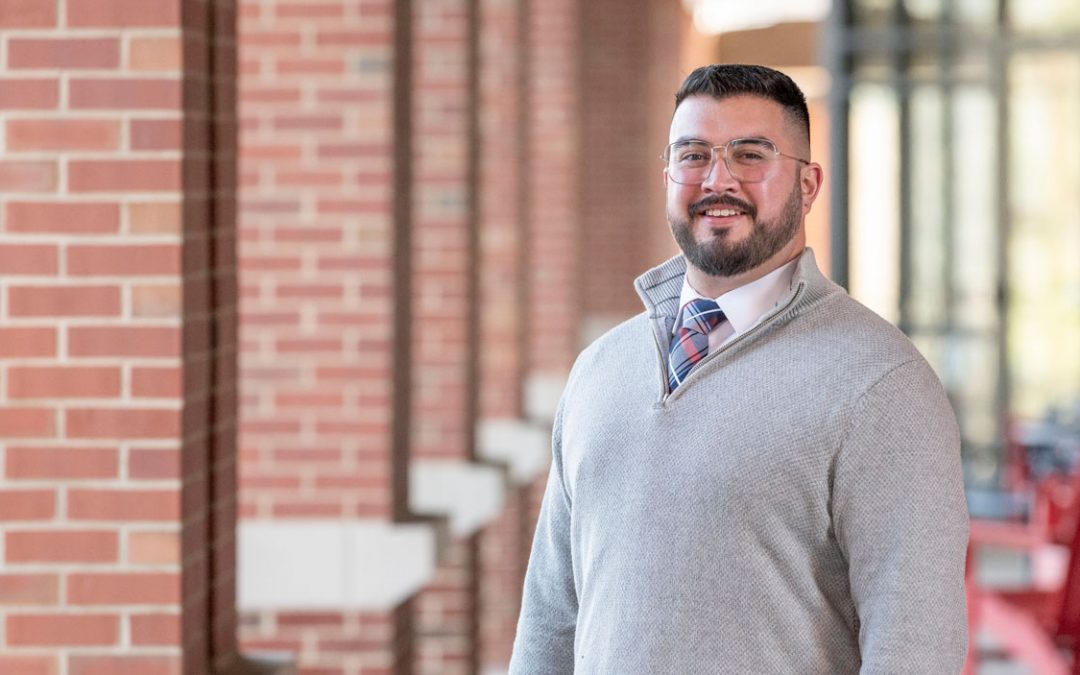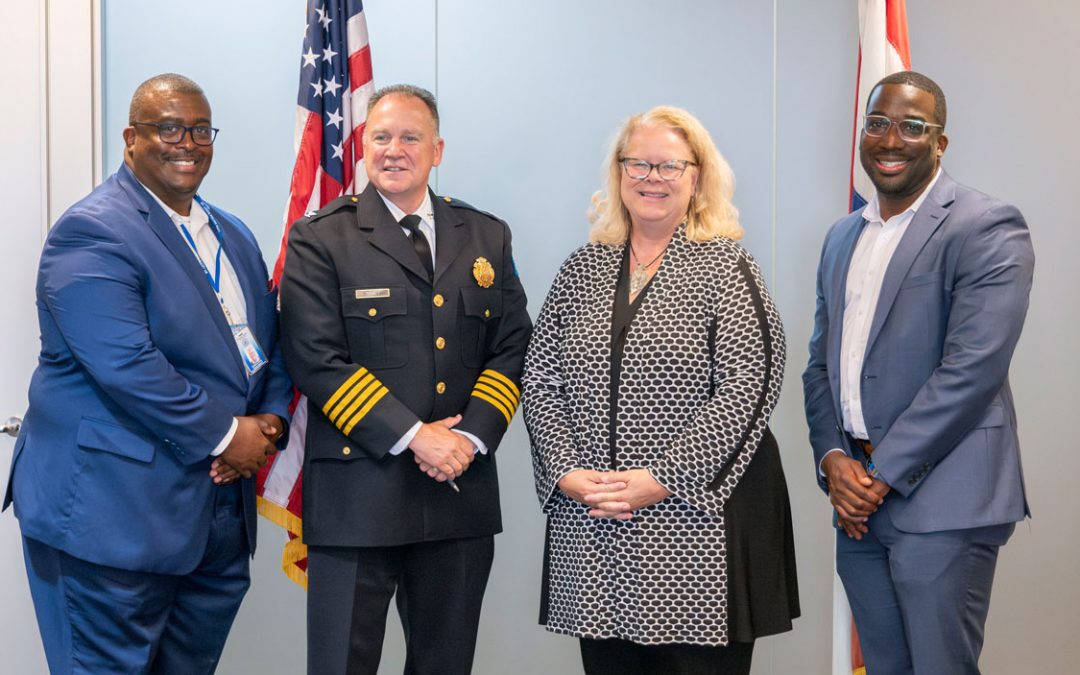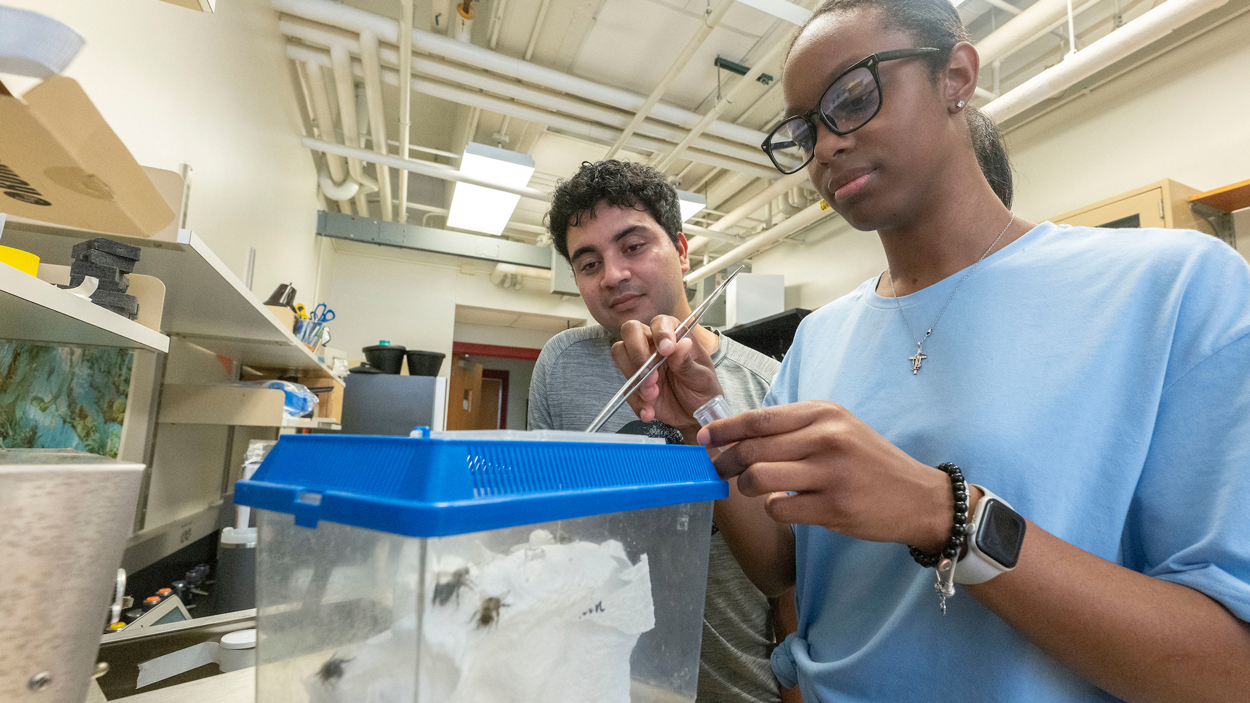
Makayla Glen works on a research project involving paper wasps, bumblebees and honey bees under the direction of UMSL PhD student Samir Kuinkel. Glen is one of four interns who participated in Collaborative Laboratory Internships and Mentoring Blueprint program this summer. (Photos by Derik Holtmann)
Standing in front of aspiring high school scientists, and their friends and family Friday evening at the University of Missouri–St. Louis, Associate Professor Lon Chubiz found it hard to believe the group was celebrating the Collaborative Laboratory Internship and Mentoring Blueprint program’s 10th year.
“It’s hard for me to believe that it’s been 10 years, but it has been 10 years this program has been running,” he told the crowd of more than 30 people in the office of the Whitney R. Harris World Ecology Center in Benton Hall. “In those 10 years, the Collaborative Laboratory Internship and Mentorship Blueprint that we call CLIMB has coordinated paid research internships to over 100 students in north St. Louis County. Over 90% of those interns have gone on to attend four-year colleges and universities, many majoring in STEM fields.”
This summer, four students from Hazelwood East High School, Hazelwood West High School and University City High School completed paid internships in which they conducted field work and lab work with several faculty members in UMSL’s Department of Biology and Department of Chemistry and Biochemistry, including Associate Professor Aimee Dunlap, Assistant Professor Sara Miller, Professor Mike Nichols and E. Desmond Lee Endowed Professor in Zoological Studies Michi Tobler.
The opportunity to conduct research in both settings has been a central part of the CLIMB program since Patricia Parker, the retired E. Desmond Lee Endowed Professor in Zoological Studies, created it in partnership with colleagues at Jennings High School in 2015.
“The goal over the last 10 years has been to provide training in laboratory research in STEM fields with the hope of making scientific careers more accessible to talented young people who intern in the summer,” Chubiz said. “Along the way, we hope that research we do at the university is made more accessible.”
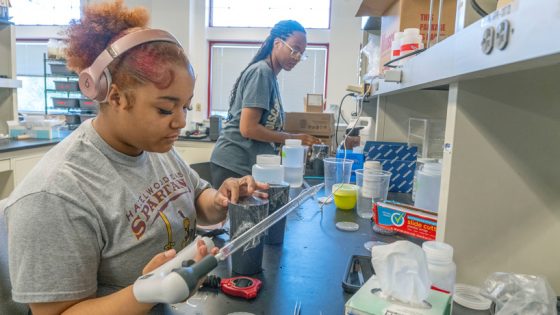
Vajah Bassett works in the lab measuring hypoxia and hydrogen sulfide tolerances in two species of fish.
He added that these opportunities have been possible through generous donations and support from individuals as well as organizations such as the Dana Brown Charitable Trust, the Trio Foundation of St. Louis, the Saint Louis Zoo, the Webster Groves Nature Study Society and others.
After his introductory remarks, Chubiz turned the floor over to the four interns – Vajah Bassett from Hazelwood East, Collin Bruemmer and Makayla Glen from Hazelwood West and Rosie Puckett from University City – who had the chance share all that they learned this summer during the closing ceremony.
“We’re here to celebrate the research accomplishments of four talented young people,” Chubiz said. “I watched them grow as young scientists over the last six weeks, and I’m so proud of what they’ve been able to do.”
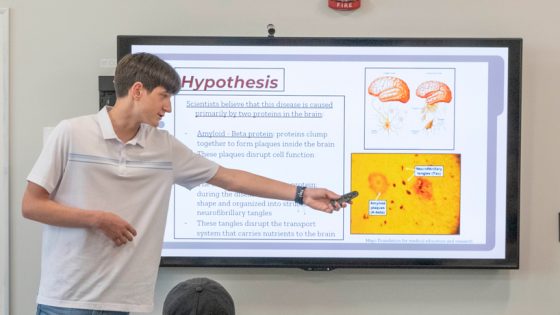
Collin Bruemmer explains amyloid-β and tau proteins and the roles they play in Alzheimer’s disease.
Bassett worked with Tobler and Bethany Williams, a National Science Foundation-funded postdoctoral fellow, examining how environmental stressors affect certain fish, particularly how hypoxia and hydrogen sulfide tolerance varies between fish populations and sexes. She also helped pin fish and then photograph the specimens to document size variations in different species.
In Nichols’ lab, Bruemmer aided Cristina Sinobas Pereira and Ryan Domalewski, graduate research assistants and PhD students, in studying proteins involved in Alzheimer’s disease. The primary focus of his work was on the chemical imbalances in the human brain connected to the amyloid-β protein.
“Most scientists believe that this disease is caused by two proteins that developed in the brain, one being the amyloid-β protein, which clumps up and causes plaques to form in the brain and these plaques disrupt cell function inside the brain,” Bruemmer explained. “The second one being the tau protein. In late stages of the disease, these proteins come together and form structures called neurofibrillary tangles, and these tangles disrupt the transport system that carries nutrients to the brain.”
Bruemmer was able to try his hand at several lab testing techniques such as size-exclusion chromatography, spectrophotometry and an indirect ELISA, or enzyme-linked immunosorbent assay.
Glen assisted Miller and PhD students Garrett Behrends and Samir Kuinkel on a project involving paper wasps, bumblebees and honey bees. Glen tested the thermoregulatory behaviors of bumblebees and honey bees in response to extreme temperatures – research that has important implications in the face of climate change. In addition to that testing, she also conducted DNA extractions.
Puckett worked with Dunlap and George Todd, a graduate teaching assistant and PhD student, to investigate the sensory trade-off hypothesis in two species of hover flies.
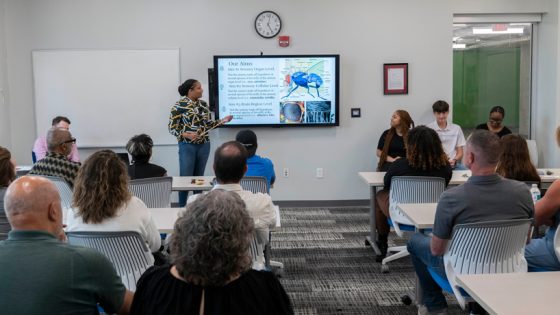
Rosie Puckett discusses her research with the crowd in the the Whitney R. Harris World Ecology Center in Benton Hall.
“The sensory trade-off hypothesis proposes that if one sensory organ increases in use in an animal species, another organ will decrease in use,” Puckett said. “Sensory organs and brain regions can grow or shrink, depending on natural selection pressures through an evolutionary time.”
She was excited to report that she did find support for the hypothesis in one of the species, Eristalis transversa. There wasn’t conclusive evidence in the other species, but she said Dunlap’s lab would continuing looking into the question.
The four interns were not only grateful for the research experience and mentorship, but also for the bonds they created.
“Outside of the lab, CLIMB has introduced me to some really cool people and helped me make lifelong, lasting connections,” Bassett said. “I got to work with three amazing interns.”




